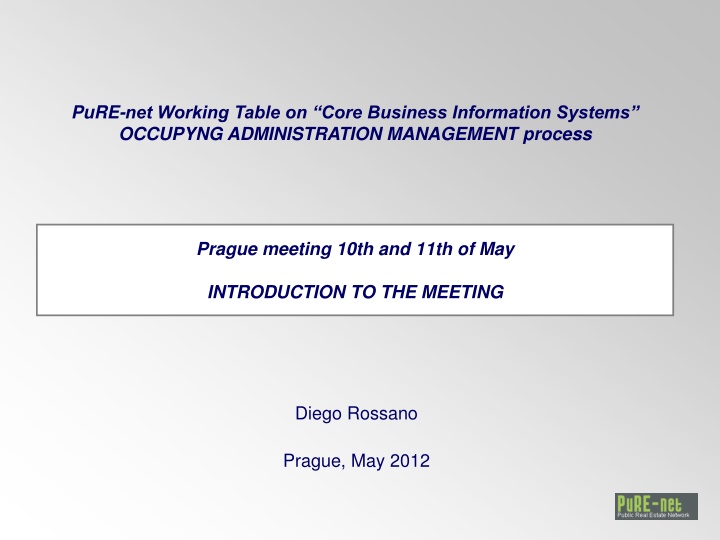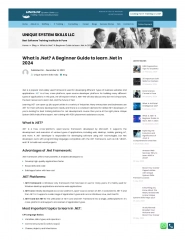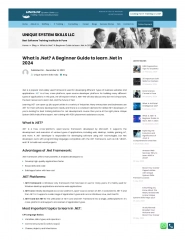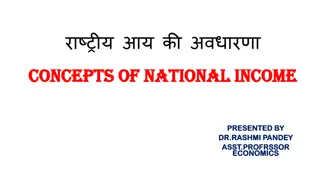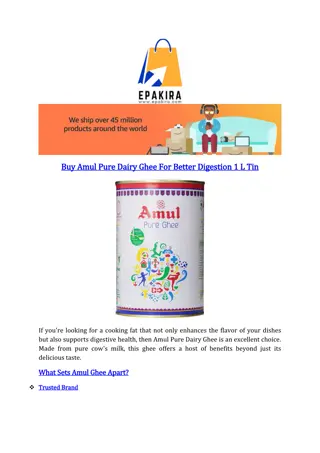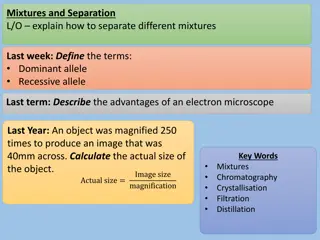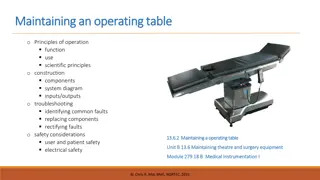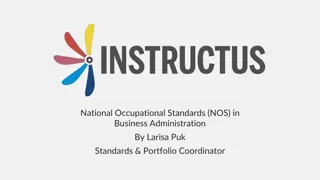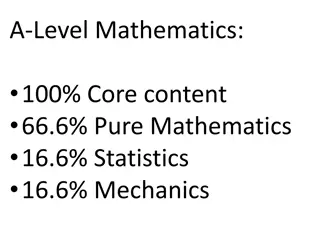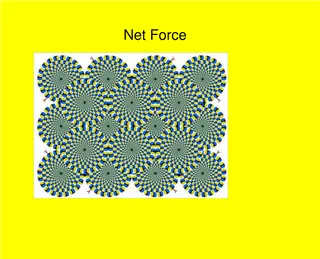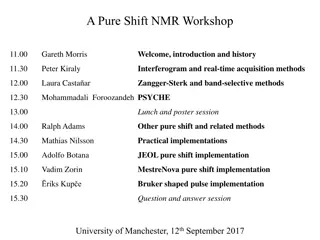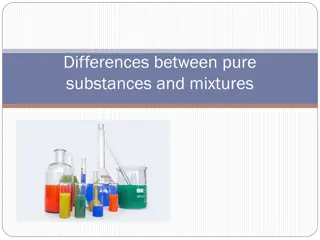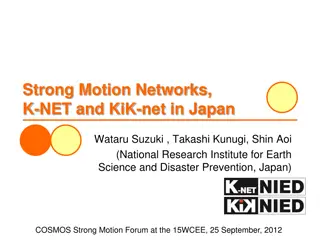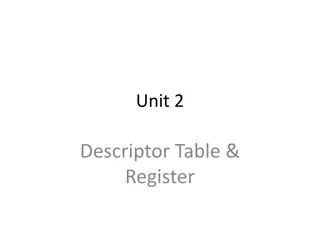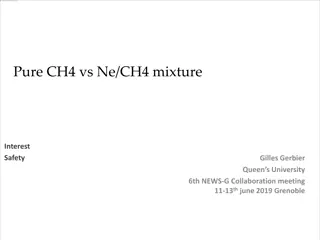PuRE-net Working Table on Core Business Information Systems Administration Management Process
This document provides an overview of the PuRE-net Working Table's initiatives related to core business information systems management and administration. It covers meetings, surveys, findings, and the focus on key processes in the IT domain. The content delves into real estate IT systems, ERP solutions, data management, and process optimization.
Download Presentation

Please find below an Image/Link to download the presentation.
The content on the website is provided AS IS for your information and personal use only. It may not be sold, licensed, or shared on other websites without obtaining consent from the author.If you encounter any issues during the download, it is possible that the publisher has removed the file from their server.
You are allowed to download the files provided on this website for personal or commercial use, subject to the condition that they are used lawfully. All files are the property of their respective owners.
The content on the website is provided AS IS for your information and personal use only. It may not be sold, licensed, or shared on other websites without obtaining consent from the author.
E N D
Presentation Transcript
PuRE-net Working Table on Core Business Information Systems OCCUPYNG ADMINISTRATION MANAGEMENT process Prague meeting 10th and 11th of May INTRODUCTION TO THE MEETING Diego Rossano Prague, May 2012
The work done so far (1 of 2) First meeting in Paris A first meeting on Real Estate IT systems was held in Paris the 16th April 2010. France Domaine presented Chorus , a Government programme aimed at defining a whole IT system for the main budgetary and accounting processes of all the ministries (central and decentralized levels). Chorus is developed with the software package integrated by SAP. Within Chorus, the real estate management is mainly carried, since April 2009, by modules RE-Fx and FI-AA. France domain led the development of the Real Estate part of the Chorus project with the objective of enhance efficiency and effectiveness of the Real Estate management. 2
The work done so far (2 of 2) The survey The Paris meeting and the presentation of the Chorus project started the discussion among the participating countries concerning the use of an Enterprise Resource Planning (SAP or equivalent) for the State Real Estate management. In order to gather info about such issue a specific survey was launched and related results presented during the 2010 Annual meeting in Helsinki. (see following pages) 3
The Survey, some findings Data and info management and control is the most important objective in developing core IT systems Almost all the organisations have already implemented an ERP system but for the majority of them the ERP system does not cover all the needs related to the Real Estate management processes Half organizations use ad hoc developed software to manage core processes Integration between RE software/ERP module and other existing applications should be improved Quality of data is a key issue and should be improved in terms of : integration of data data modelling and alignment between data and processes data enter and quality control 4
The new phase : focus on processes (1 of 2) This Working table second phase is aimed at exchanging know how and experiences of IT automation/support on specific core processes First processes to be analyzed will be processes mainly related to the core organisation performances : a) maintenance management (preventive and remedial), real estate measures' decision and programming / steering b) real estate works' monitoring and conception in the IT chosen solution c) occupying owner/tenant relationship,...), in relationships with the results already achieved in the Working Table Government Offices . administrations' management (budgetary rents, 5
Brussels meeting (13th of May 2011) Participating Countries : 1. Belgium 2. Czech Republic 3. Estonia 4. Finland 5. France 6. Italy 7. The Netherlands Each Country presented an overview of the 3 processes under discussion by explaining the organisation s role and responsibility on each process and by showing screen shots on the relevant supporting software for each process 6
Brussels meeting main findings Occupying administration management is the most important process for all the participants. Indeed in all the participant Countries there are policies aimed at developing a stronger centralised role concerning the government office management in order to improve efficiency and effectiveness of government offices. These policies impact on processes and related supporting software Occupying administration management and maintenance management are processes that require huge effort in data maintenance and updating. Solution : Tenants stronger involvement and responsibilities on data management and the related use of web based applications are possible solutions for that issue Building energy consumption is nowadays a key issue and related data and info must be considered in developing IT solutions for Real Estate management processes GIS and Map layers are commonly used and considered indispensable tools for portfolio strategy Market software/modules still require huge customization (exception The Netherland project) Integration is a great challenge for many (what level of integration is really needed among internal and external applications and why ?) 7
Next steps 1. Detailed supporting software, starting from the process OCCUPYING ADMINISTRATION MANAGEMENT which has been declared as a priority process by the participating Countries benchmark analysis on processes and related 2. Other processes analysis PRESENT MEETING MAIN OBJECTIVE 8
2012 IT Working Table PuRE-net Working Table on Core Business Information Systems OCCUPYING ADMINISTRATION MANAGEMENT process Executive summary of the Brussels meeting presentations Prague, May 2012
The Occupying Administration management process - BELGIUM Occupying administration management A new program is under development (testing by the end of 2011) to better support the Client (government administrations) space management issues (planning and monitoring). Key development target are : Increase process control Introduce uniform and verifiable procedures Allow in an early stage check for strategic alignment Introduce new requests (of space, by the government administrations) via single point of entry Agree with clients proper internal procedures to come to a valid request of space Structure the communication between clients and buildingsagency Communication to the administrations about progress of the analysis of the requests Provide structured input short time and long time planning process Register the problems as well as the possible solutions Introduce standard criteria to define priority levels Internal control : work on the right projects / priorities Full input by clients and all Buildings agency agents involved 10
The Occupying Administration management process CZECH REPUBLIC Managed processes and related IT support (supported by IS) Monitoring and management Utilization process Basic processing steps Activities supported by IS Content Related Entered Accounted Registered Acquisiti on Buildings in own use : building technical data basic data + information and data on the state of utilization) Passportizati on Proposal (own use, letting, disposal) Business plan approved Maintenance, repairs, investments Payables link to Economic IS Running costs Business plan Energy consumption, services Payables link to Economic IS Own use Letting (free / for rent) Utiliza tion Letting of free space to other subjects, Invoicing + recharge of costs to users Contracts link to Utilization Receivables link to Economic Revenues Draft contract Contract concluded RE transferred Disposal Gross useful space of building Office space Workplaces / employee Office space / employee Space management 11
The Occupying Administration management process ESTONIA State real property register functions (new register created at Ministry of Finance since 01/01/2011 starting from data and function from the old State register) (Developed within 2011) 12
The Occupying Administration management process FRANCE Occupying administration management The financial and legal connections between the State and the different occupying administrations conventions (operating and management contract). are built on occupying France Domaine uses SAP RE-Fx (Real Estate Inventory Management) and SAP FI-AA (Financial Accounting Assets) SAP modules to manage the real estate inventory and the accounting inventory. RE-Fx occupying available/vacant places knowledge. Budgetary rents (invoices issuance and payment) are managed in software still not integrated with RE-Fx. features : occupancies and occupants vacancy management, management, conventions follow-up, 13
The Occupying Administration management process ITALY Occupying administration management Process overview Space rationalisation and energy efficiency objectives are carried out with the active involvement and cooperation of the tenant administrations through ad hoc working tables As far as government offices located in private spaces are concerned, Agenzia is responsible for the signing governance and control of all the Rental contracts As far as private tenants are concerned, contracts are managed coherently with market rules and fees IT support A new software (integrated with the main portfolio information system) has been developed to gather information concerning space usage by the tenant administrations (e.g. number of FTE per office, etc.) The rental management process for private tenants is completely automatic (contract management, invoice scheduling, credit collection, etc. ) 14
The Occupying Administration management process THE NETHERLANDS AS IS TO BE Other decentral registers (no interfaces) Maintenance: Central management of all maintenance Developing to Maincontracting, must be better supported by IT (redesign in Oracle) Own inspection- and qualityindicator method (BOEI) Planning of preventive maintenance via MUP (multi year exectution plans) Works monitoring: Central management of works Dutch government agency in charge of the budget, must be better supported by IT (standardized in Oracle) Tennant administration: Central administration Badly supported by IT (redesigning in Oracle) Last governmental reorganisation after elections resulted in difficulties in billing 15
2012 IT Working Table PuRE-net Working Table on Core Business Information Systems OCCUPYING ADMINISTRATION MANAGEMENT process Survey results analysis Prague, May 2012
The Questionnaire Occupying Administration Management process assessment questionnaire has been defined with the goal to collect compare organisational and technical issues of the process The questionnaire is divided in 4 sections: A) Context setting B) Strategy and Relationship management C) Management and Enablers D) Operations and Outcomes Key Performance Indicators 17
The Questionnaire Survey analysis is based on 6 responding countries: BELGIUM Buildings Agency (BA) CZECH REPUBLIC Office for Government Representation in Property Affairs (OGRPA) ESTONIA State Real Estate Ltd (SRE) Ministry of Finance of the Republic of Estonia (GOV) FRANCE France Domaine ITALY Agenzia del Demanio THE NETHERLANDS Rijksgebouwendienst-Government Buildings Agency (Rgd) 18
A) Context setting QUESTION 1: How many State buildings (in your portfolio) are used as Government offices? FOCUS: Percentage of State buildings used as Government offices is very different among countries. The lower is in CZECH REPUBLIC (4.4%), the higher in ITALY (66%). Data highlights different organisational missions . Those differences impact on priorities and strategies concerning process management issues 19
A) Context setting Organisation s portfolio : percentage of BUILDINGS used as Government offices(question A1) 20
A) Context setting QUESTION 2: How many assets are rented from the market for Government office purpose? CZECH R. = 12% ESTONIA = 10% The NETHERLANDS = 27% ITALY = 33% BELGIUM 54% FRANCE 55% 3 different cluster = 3 different strategy/choice ? (Some data to be verified 21
A) Context setting QUESTION 3: types ? Level of standardisation of the Gov. offices in terms of building LOW LEVEL of Standardization (a lot of dfferent buildings type/structures / layout HIGH LEVEL of standardisation (few different types of buildings/layout) MEDIUM LEVEL of standardisation BELGIUM X CZECH R. X ESTONIA X FRANCE X ITALY X NETHERLANDS X 22
A) Context setting QUESTION 4: Are there any specific rules/regulations concerning criteria or standard (e.g. building characteristics, location, etc.) to be considered in defining (selecting) State and private assets to be used as government offices? CZECH : Administrative building code (location, refurbishment rules, etc.) ESTON IA : Not yet Quality and location ITALY: fee evaluation for market rented buildings and Administration needs evaluation (case by case) FRANCE: fee limit for market rented buildings BELGIUM: Energy efficiency and accessibility to public transports system, THE NETHERLANDS : Access to public transport system 3 clusters ? Strategic view to be clarified 23
A) Context setting QUESTION 5: Are there any layout/furniture specific rules/regulations (or standards) to be applied in defining / designing spaces to be used as government offices? (e.g: rules concerning m per person based on the employee function, rules concerning image (identity) of the government office spaces, etc.) CZECH R. : Occupancy standard (including facilities specifications) BELGIUM : Occupancy standard (including facilities specifications) ITALY: Occupancy standard (to be updated and applied) FRANCE: Occupancy standard THE NETHERLANDS : Occupancy standard ESTONIA : Occupancy standard (to be set) There are no specific criteria concerning building internal layout (space configuration not occupancy performance rules) and furnitures. Is this a specific choice (coherent with the low level of standardisation) ? 24
A) Context setting QUESTION 6: Does the tenant administration allocated in a State building pay nay rent (real or notional) ? No RENT NOTIONAL RENT REAL RENT BELGIUM X * (Local authorities and privates only) CZECH R. X If SRE is the owner X (for the first 2 years) If SRE is the owner X (after the first 2 years) X No if the State is the owner ESTONIA FRANCE X X (to be updated and applied) ITALY NETHERLANDS X 25
B) Strategy and Relationships management QUESTION 1: Which are your organization / your government strategic priorities? HIGH STRATEGIC PRIORITIES Reducing running costs (energy, maintenance, etc.) is a high priority for all organisations involved (level 2 or 3) Space efficiency through sqm x employee reduction is a high level priority for Belgium, Estonia, France and Netherlands (level 3), Italy (2) LOW STRATEGIC PRIORITY Adopting market solution rather than public solution is considered a high priority only by Ministry of Finance of Estonia (level 3). For all other countries it is a low strategic prioy. 26
B) Strategy and Relationships management Strategic priorities overall ranking of all participant countries (question B1) 27
B) Strategy and Relationships management STRATEGIC PRIORITIES (question B.1) BEL CZE EST EST (GOV) FRA ITA* NETH FROM 0 (NONE) TO 3 (HIGH) (SRE) Efficiency on space utilisation 3 0 1 3 3 2 (3) 3 Improve customer (tenant) satisfaction 1 1 3 2 1 0 1 Reducing running cost 2 3 3 3 2 2(3) 3 Reducing environmental impact 3 1 2 2 2 1(2) 2 Reducing market rented buildings 0 2 0 0 2 3 3 Adopting market solutions 0 0 - 3 0 0 1 Relocating government offices to less expensive spaces 0 2 0 1 2 0 (1) 1 Concentrate Departments/Ministries in a dedicated area 1 0 1 3 0 0 3 Changing / Reviewing Depart./ Ministries organisation 2 1 2 2 0 0 0 * Recent changes (priorities to be updated ) 28
C) Management and Enablers QUESTION 1: Roles and responsibilities regarding the PROCESS Occupying Administration Management Proactive analysis ??? To be verified BELGIUM BA To be verified CZECH R. Administration request OGRPA+Other OGRPA OGRPA OGRPA ESTONIA Tenant Tenant SRE+Tenant SRE SRE Gov. Administration express needs than negotiation FRANCE France Domaine+ User administration France Domaine+ User administr. User Administr. France Domaine Gov. Administration express needs than negotiation ITALY Agenzia Demanio+ User admin. Agenzia Demanio+ User admin. User Administr. Agenzia Demanio Administration housing request User Administr. NETHERLANDS Rgd Rgd Rgd The Key strategic difference 29
C) Management and Enablers QUESTION 2: How many human resources (employees) work on this process ? ASSETS (not considering market rented) RESOURCES/ FTE ASSETS per RESOURCE BELGIUM 470 687 1,46 850 NETHERLANDS 2.000 2,1 +100 external CZECH R. 132 69 1,91 ESTONIA 32 491 13,8 Countries with a management responsibility DATA TO BE VERIFIED ACCORDING TO THE POSSIBLE DIFFERENT SPECIFIC ROLE IN TERMS OF MANAGEMENT ISSUES 30
C) Management and Enablers QUESTION 2: How many human resources (employees) work on this process ? RESOURCES/ FTE ASSETS per RESOURCE ASSETS FRANCE 200 27.000 135 ITALY 170 30.000 176 Countries without a Management direct responsibility Quite comparable data 31
C) Management and Enablers QUESTION 3: How IT systems support the process ? Hydra Internal RE Database Hydra Internal RE Database BELGIUM Manually, Excel Document management CZECH R. IS IS IS Sharepoint + Archibus FM Archibus FM Archibus FM ESTONIA Excel Excel User admin. tools Chorus (RE-Fx) FRANCE Chorus Chorus RE-Fx REMS (RE Management System) REMS (RE Management System) PORTALE PA ITALY PORTALE PA NETHERLANDS Oracle sales Horizon Horizon 32
C) Management and Enablers QUESTION 3: How IT systems support the process ? Which kind of specific IT priorities are to be implemented in supporting process management? WHAT ABOUT PRODUCTION ??? (Planning and reporting) 33
C) Management and Enablers QUESTION 4: What kind of data are managed in the supporting software concerning physical and technical aspect of the properties assigned/used as government offices? MOST COMMON PHYSICAL DATA (State owned prevailing) Address, location, city, region, etc. Cadastral data (mainly authomatically integrated with Cad. Data Base) Type of ownership (100% state owned?) Pictures, floor plans, maps, etc. Gross surface/area, n of floors, etc. Description/type of the building Cultural Heritage restrictions/protections MAIN NEEDS / ISSUES BELGIUM: - Incompleteness of multimedia files (maps, scans, etc. not updated) - Surface/dimensions data not updated ITALY: - Overall quality of the data 34
C) Management and Enablers QUESTION 5: What kind of data are managed in the supporting software concerning administrative and user aspects of the properties assigned/used as government offices? MOST COMMON ADMINISTRATIVE/USER DATA Contract/assignement infos (starting date, expiring date, duration, ev. renewal date, etc.) Tenant/user infos (Ministry, Dept., etc.) FTE and n of resources MAIN NEEDS / ISSUES BELGIUM: High criticality in collecting persons/FTE occupying buildings Consequently, high difficulty in FTE/sqm reduction ITALY Overall Quality of the data 35
C) Management and Enablers QUESTION 6: What kind of data are managed in the supporting software concerning economic/financial aspects of the properties assigned/used as government offices? MOST COMMON ECONOMIC/FINANCIAL DATA Building value (market, State balance, ect.) Rent/fee (total, annual) Maintenance costs/expenses Refurbishment costs/investments Taxes and local taxes LESS COMMON DATA Costs for security measurement (Netherlands) Acquisition cost (Estonia) Priorities (in your point of view) ? 36
C) Management and Enablers QUESTION 7: What kind of data are managed in the supporting software concerning green aspects of government offices? the properties assigned/used as MOST COMMON ENERGY CONSUMPTION AND GREEN DATA Electricity, gas, fuel, refreshing, heating, water consumptions LESS COMMON ENERGY CONSUMPTION AND GREEN DATA Nowadays, Netherlands is the only country/organization where Green/Energy Performance Label is showed on the system Future development ? 37
D) Operations and Outcomes Key Performance Indicators QUESTION 2: Are there any Key Performance indicators (and related standard) used by your organisation to monitor the proper and effective use of the assigned / rented building? HIGHLIGHTS FRANCE 12 sqm/FTE / Fee limit for market rented buildings BELGIUM 13.5sqm/FTE ESTONIA costs: 2.55 /sqm? ITALY 25sqm/Person (to be updated and applied) THE NETHERLANDS 24.5 sqm/FTE (TARGET) 0,9 (0,7 for new buildings) workplace/FTE (TARGET) Is there a common space measurement and surface definition policy ? (UNI EN 151221-06) 38
Some final remarks Just a first analysis of the answers : there is a need for a more specific and detailed analysis by each participant in order to collect a wider range of considerations Some data and/or some questions should be verified / and maybe further clarified in order to allow effective comparison In particular, few tables could be selected (e.g. roles and responsibilities and automated support functions) for a next step in-depht verification and benchmark to be conducted mainly as home-work Web-conference could be used to avoid to many travel expenses before the next annual conference 39
